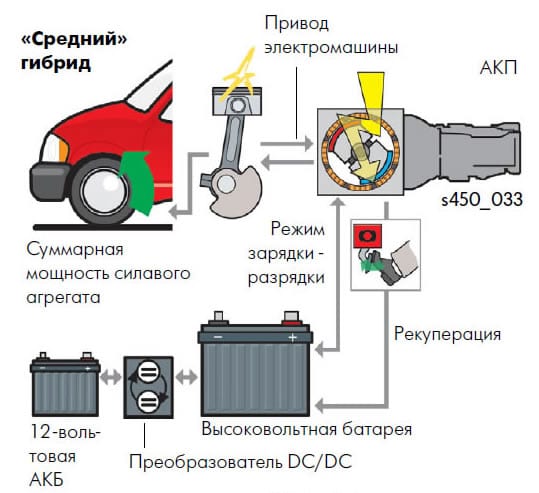
What is a mild hybrid system and why is it needed?
Hybrid systems have evolved into many different solutions, and one of the simplest and most commonly used is the mild hybrid, the so-called mild hybrid. It plays three main roles and, depending on the type of vehicle, can operate at 12, 24 or 48 V. Here is a body of knowledge on this subject.
The main thing to remember is that Mild hybrid systems are not designed to drive a car on electricity alone.like classic HEV hybrid cars. If the car has that capability, the mild hybrid system is no more.
The mild hybrid system is designed to support the internal combustion engine in obtaining the highest possible efficiency, and in the 24- or 48-volt version, although it is also successful in the 12-volt version, is to provide electricity to the car, even when the internal combustion engine is turned off.
Another important a feature of the "mild hybrid" system is a separate batterywhich stores electricity, but for a different purpose than the classic battery. It can power all the on-board electrics, as well as add power to the engine or start it in some situations.
Objectives of a mild hybrid system:
- Add energy to the internal combustion engine.
- Starting the internal combustion engine.
- Holding voltage when the internal combustion engine is not running.
How are soft hybrid tasks performed?
An internal combustion engine is inefficient in a fairly wide range of revolutions, and if we are talking about the car as a whole, it is the least effective when starting off and accelerating from low revs. Starting off is the most energy-intensive and therefore requires a lot of fuel. This is why cars burn the most in the city, but also thanks to the support of the electric motor when starting off and driving at low speeds, hybrids are the most economical in the city.
The mild hybrid system replaces the true hybrid.. The device, which can be called a motor-generator, is attached to the internal combustion engine via a drive belt (the system and appearance are similar to a classic alternator). Each manufacturer uses a different name for such a device, but the Polish "generator" is a catch-all term because this device acts as both an engine (motor) and an electric generator.
Motor generator as an engine takes the energy stored in the extra battery and converts it into torque is transmitted through the belt to the crankshaft of the engine. Usually it is from tens to several tens of newton meters, which is supported by the engine just when it is least efficient.
Electricity from batteries is, in a sense, free.. The fact is that in the classical system (generator-battery), when the car slows down or brakes, the energy generated by the generator is stored only up to a certain point, until the battery is charged. If he can no longer accumulate it, the generator does not work or energy is not stored. In a mild hybrid system, this energy is wasted less frequently, and switching from kinetic to electric allows it to be stored in an additional battery, which then transfers the electricity to a generator that supports the engine.
Does it really feel? Usually little or nothing. An additional 10-20 Nm is hardly felt, and fuel consumption drops by a maximum of 5 percent.
We will feel more when the mild hybrid also implements the quick start feature. In such a system, the car does not have a classic starter - this role is performed by our motor-generator. It has more power, and sometimes works with higher voltage (eg 24 or 48 V), so it works quickly. Effect? In the start & stop mode, it is impossible to feel the start of the engine. Moreover, it can be turned off even while driving, as the entire mild hybrid system maintains voltage in the car's on-board network.
And this is the third function, in modern cars, in which many components work as electric ones (for example, power steering), it is extremely useful. Thanks to this, when driving, it is possible to turn the engine for only a few tens of seconds in situations such as entering an intersection at a minimum speed or driving with a very light load. Of course, everything happens automatically. At any moment, as soon as the driver presses the gas or brake, the engine starts.
By implementing these three functions at the same time, although not every mild hybrid system is able to do this, this system can save a small amount of fuel up to about 10%. It does this by supporting a heavily loaded engine, instantly turning it on and off both when parked and while driving. The real benefits are small and are achieved mainly by car manufacturers in tolerance tests, but in practice in many cases it is thanks to mild hybrid systems that we can enjoy big and/or strong engines or the fact that internal combustion engines from some manufacturers are still available.
